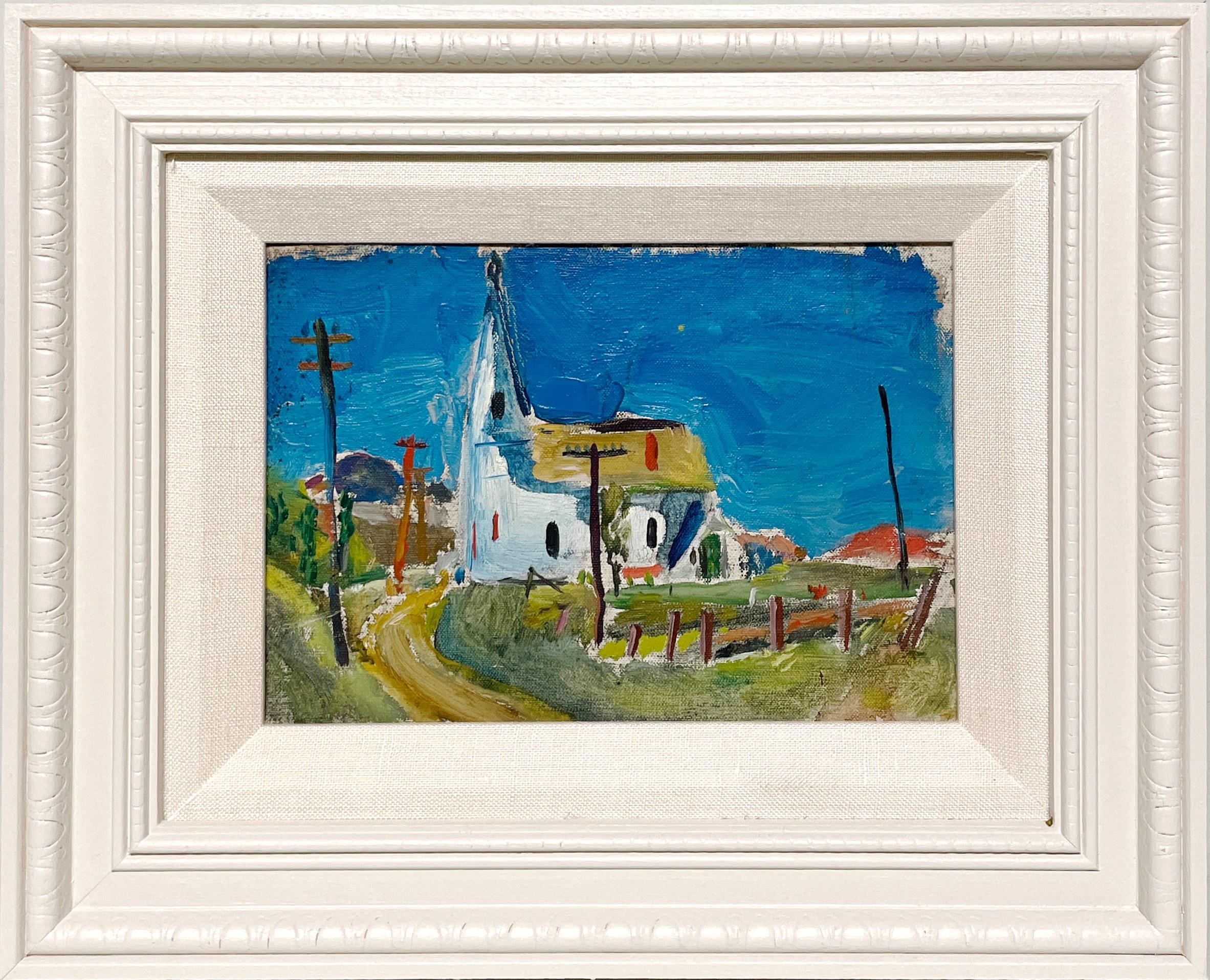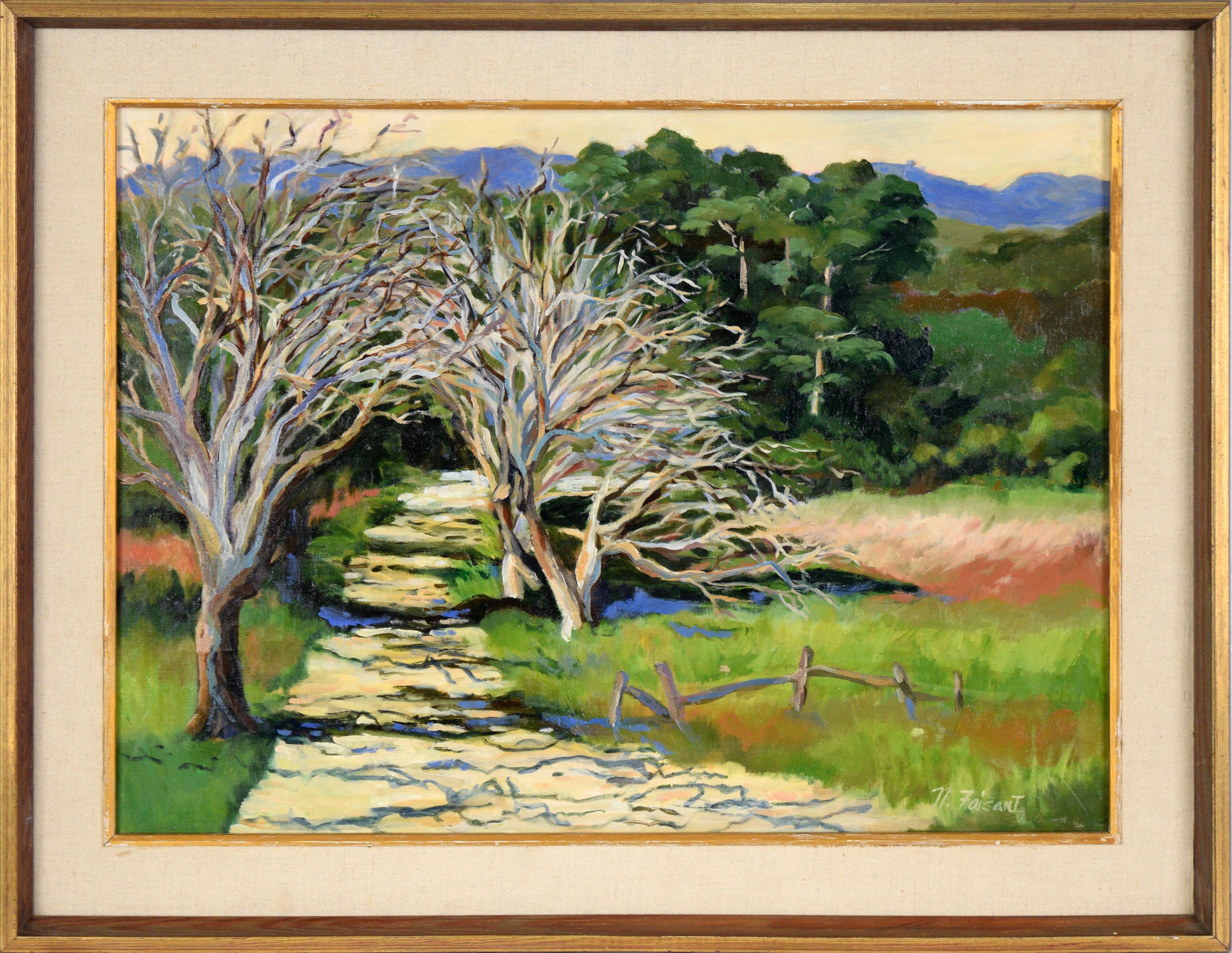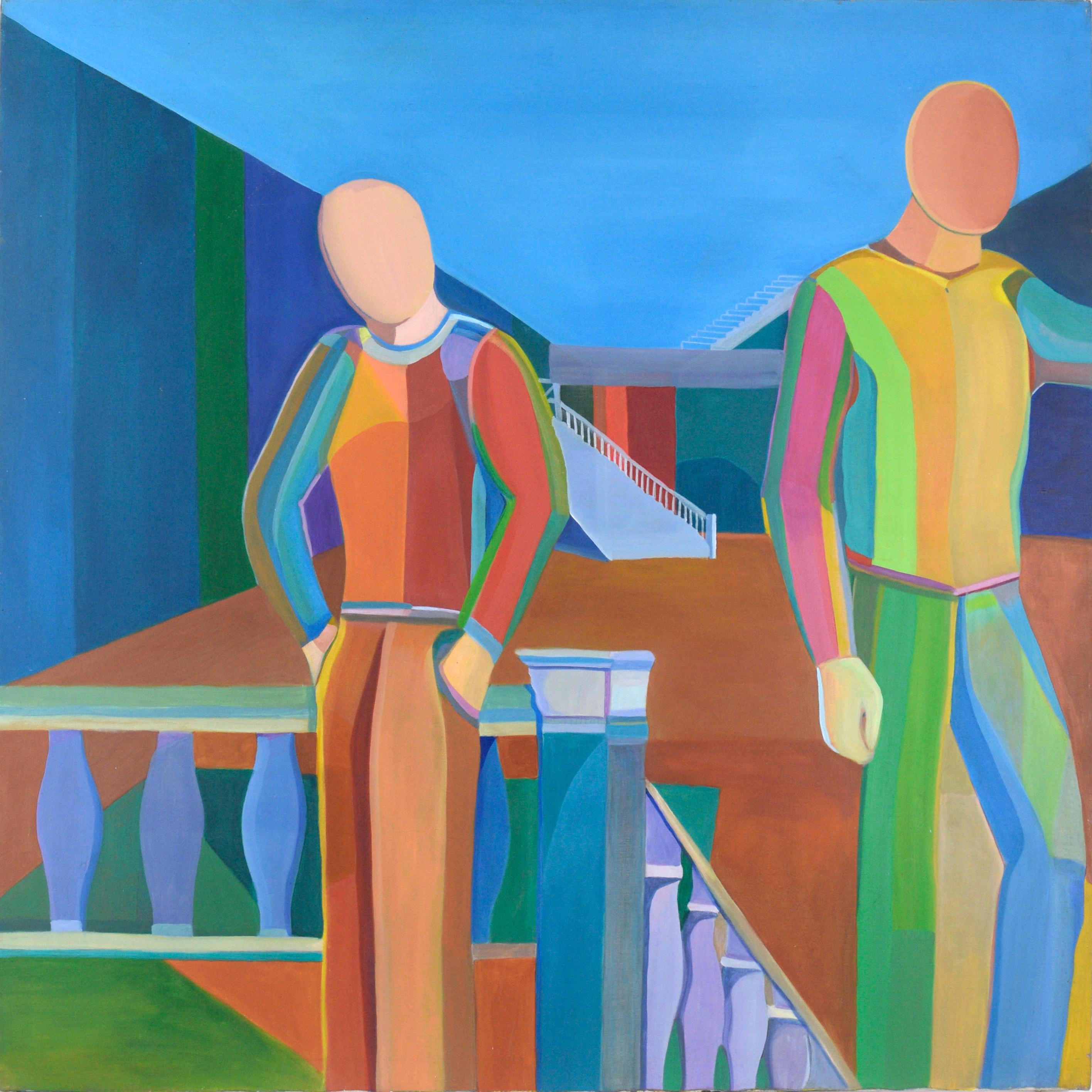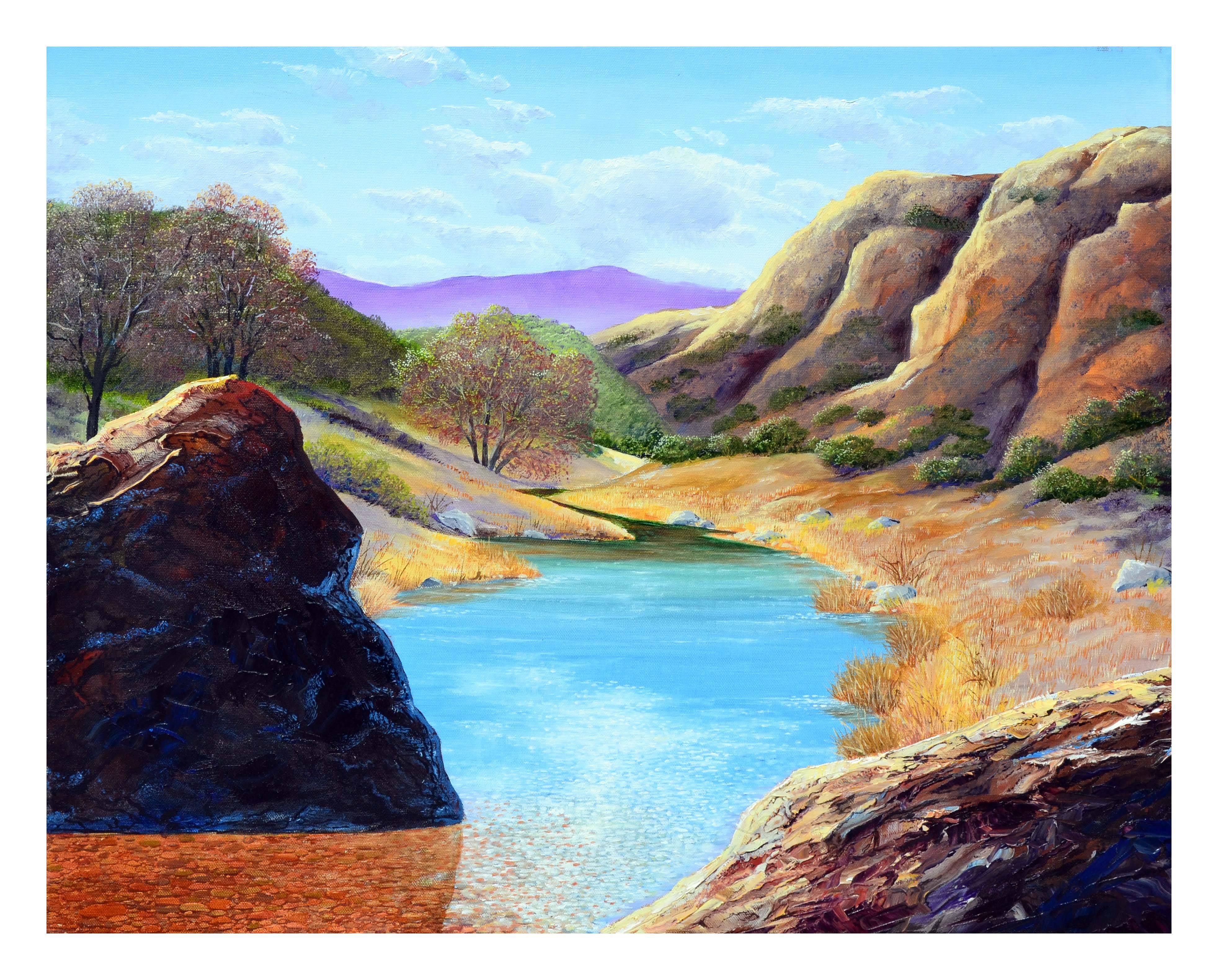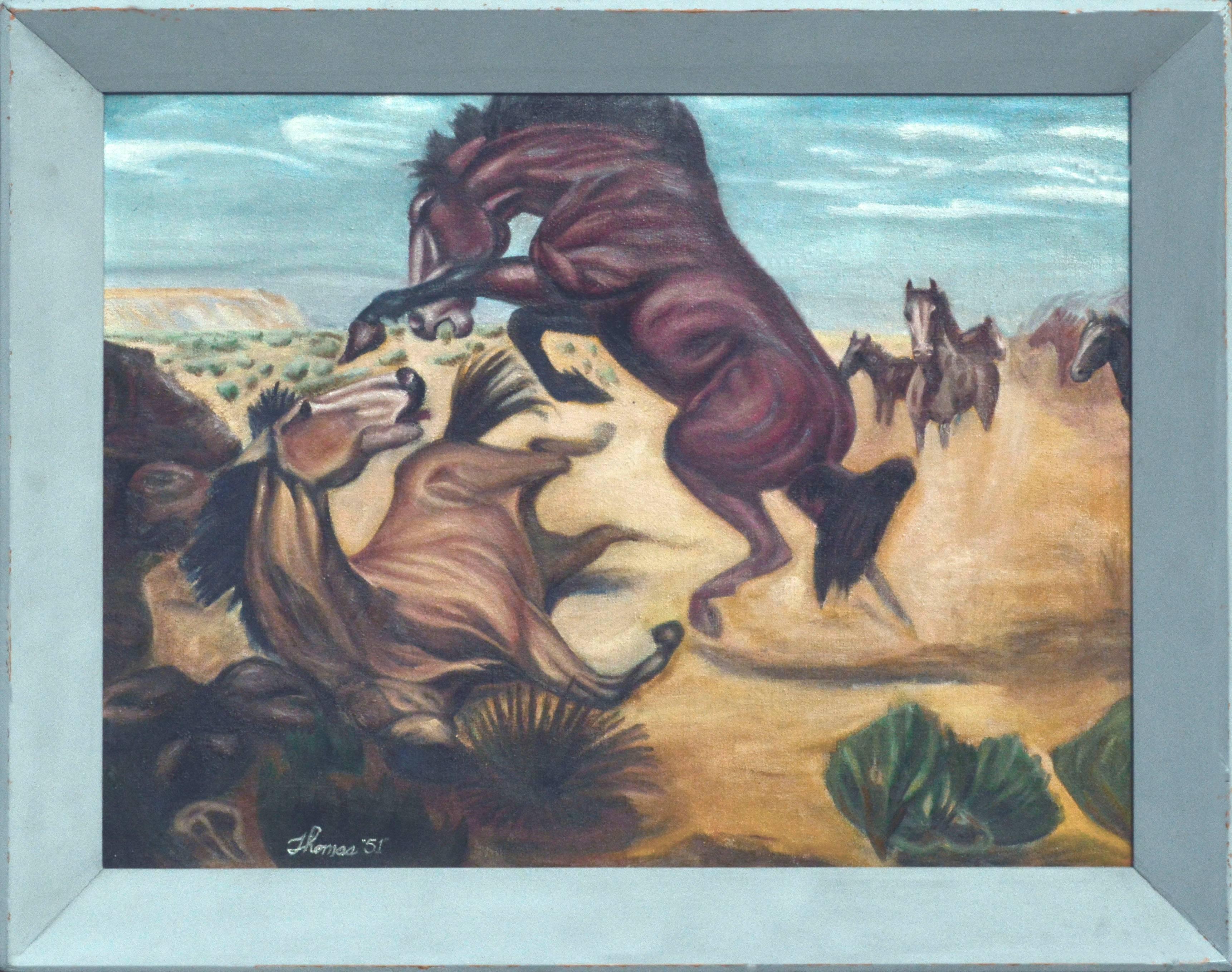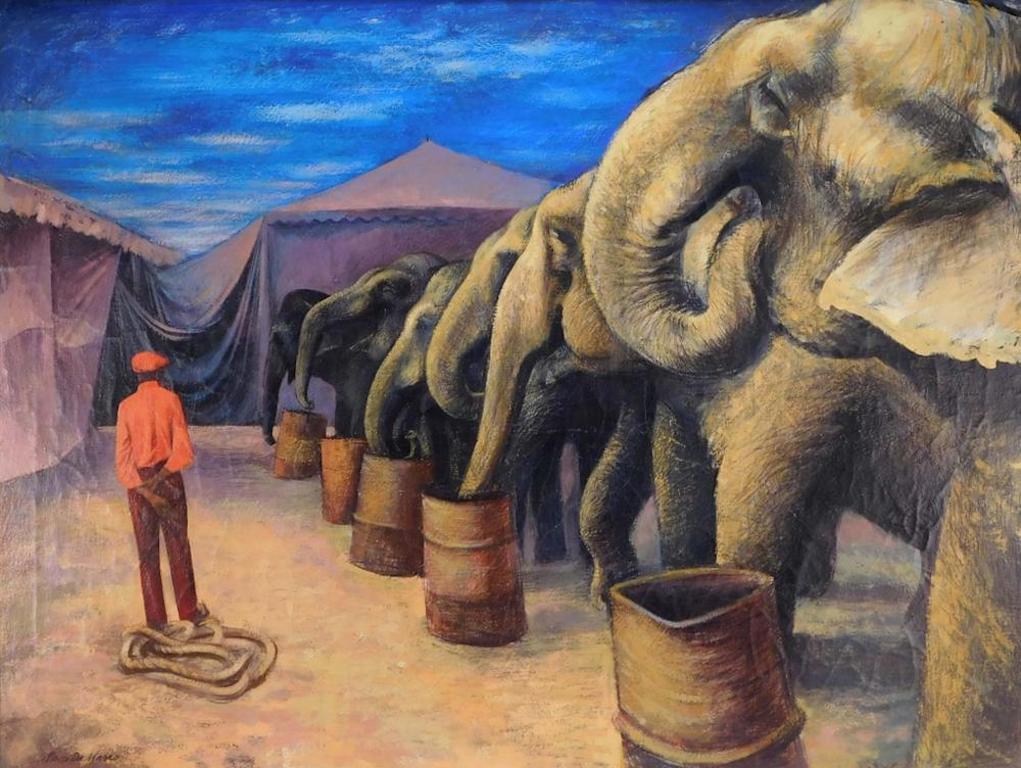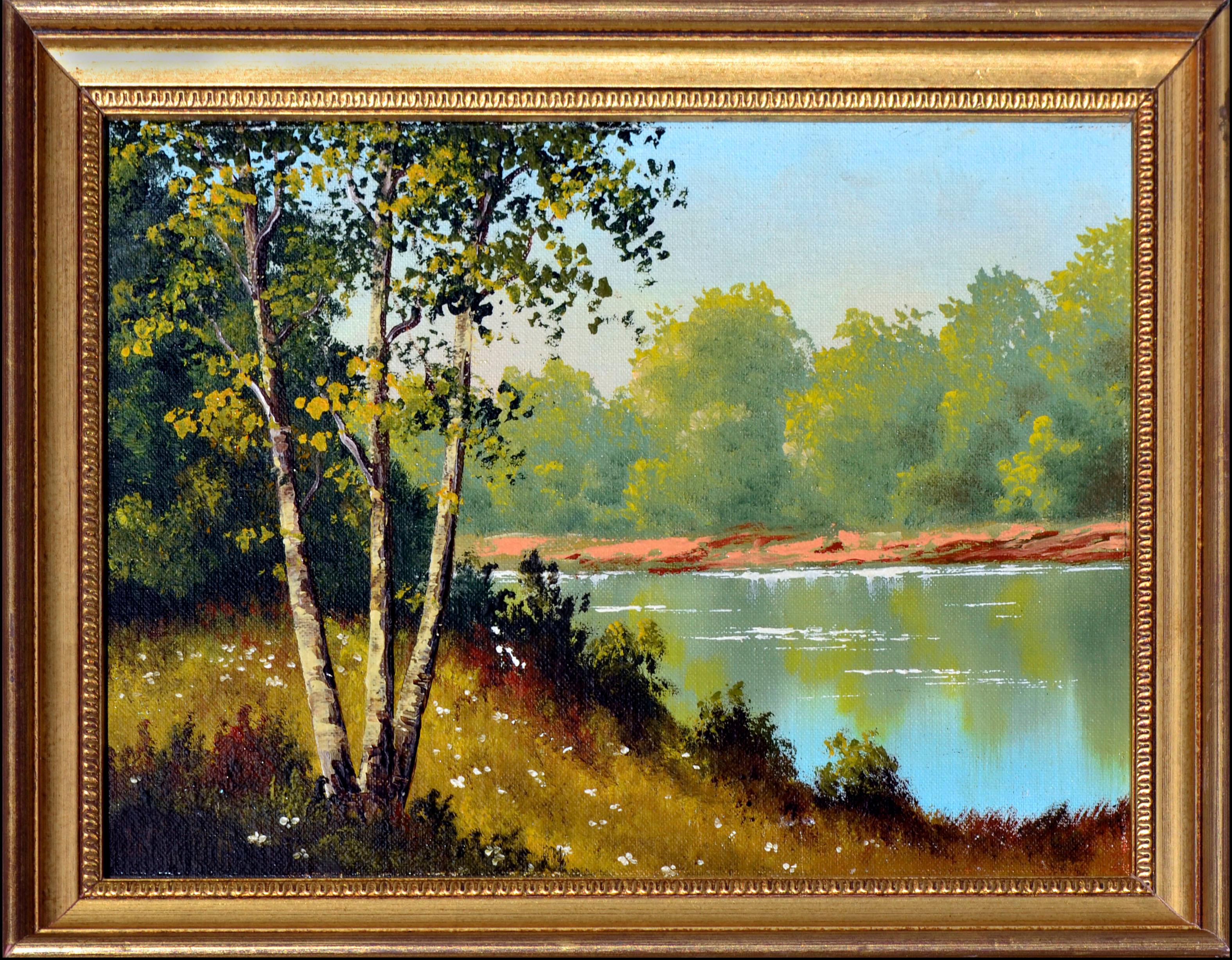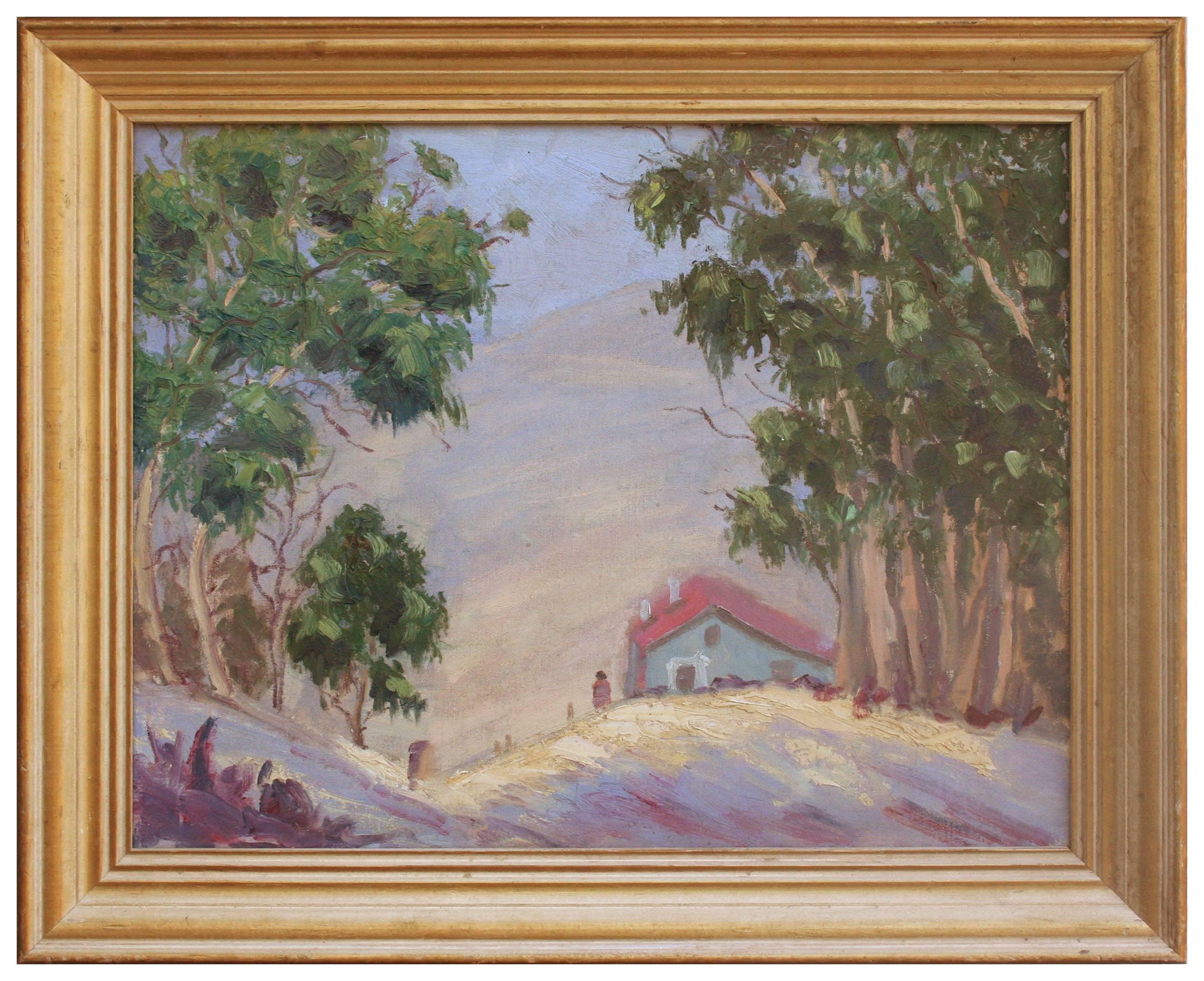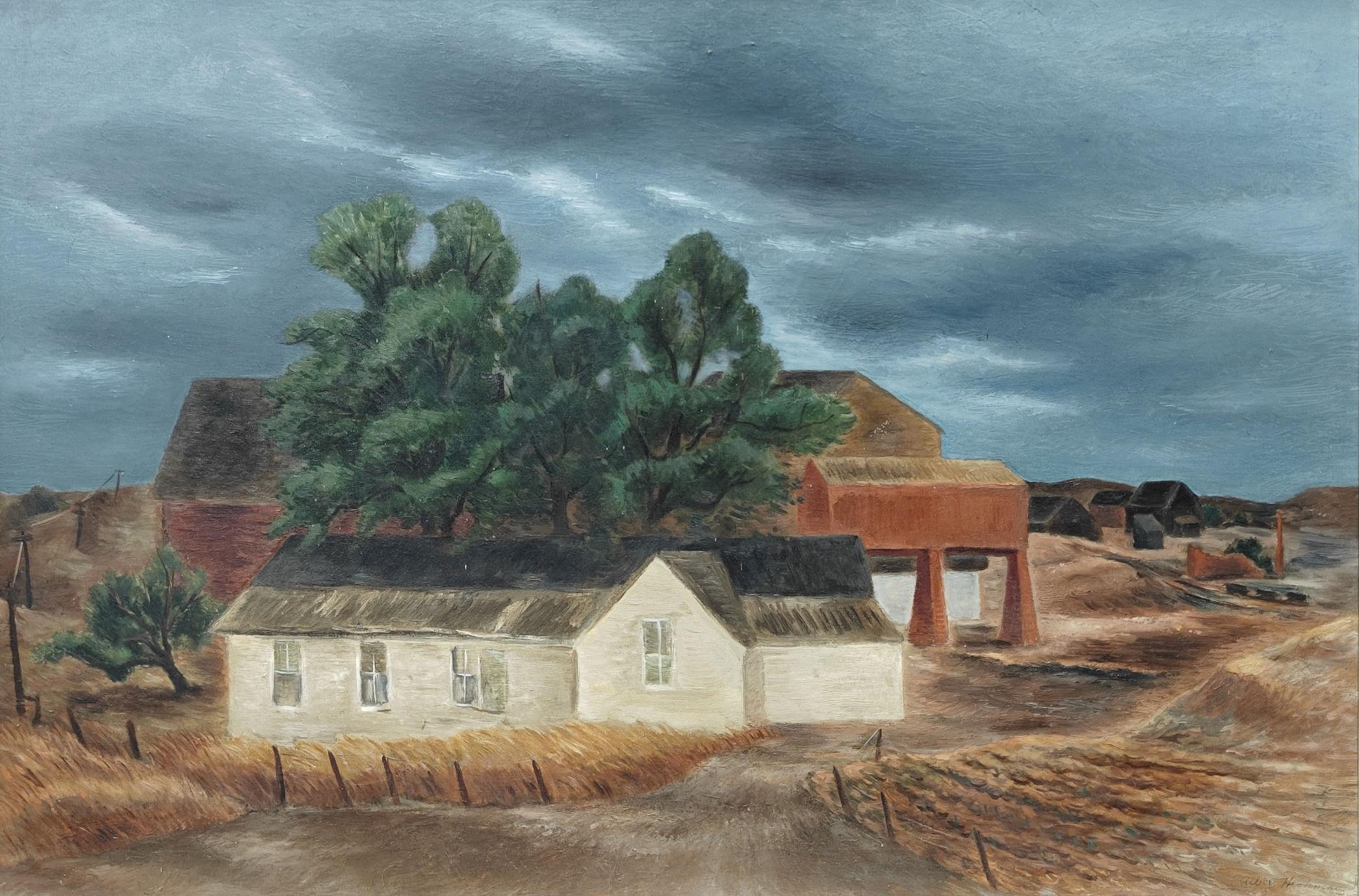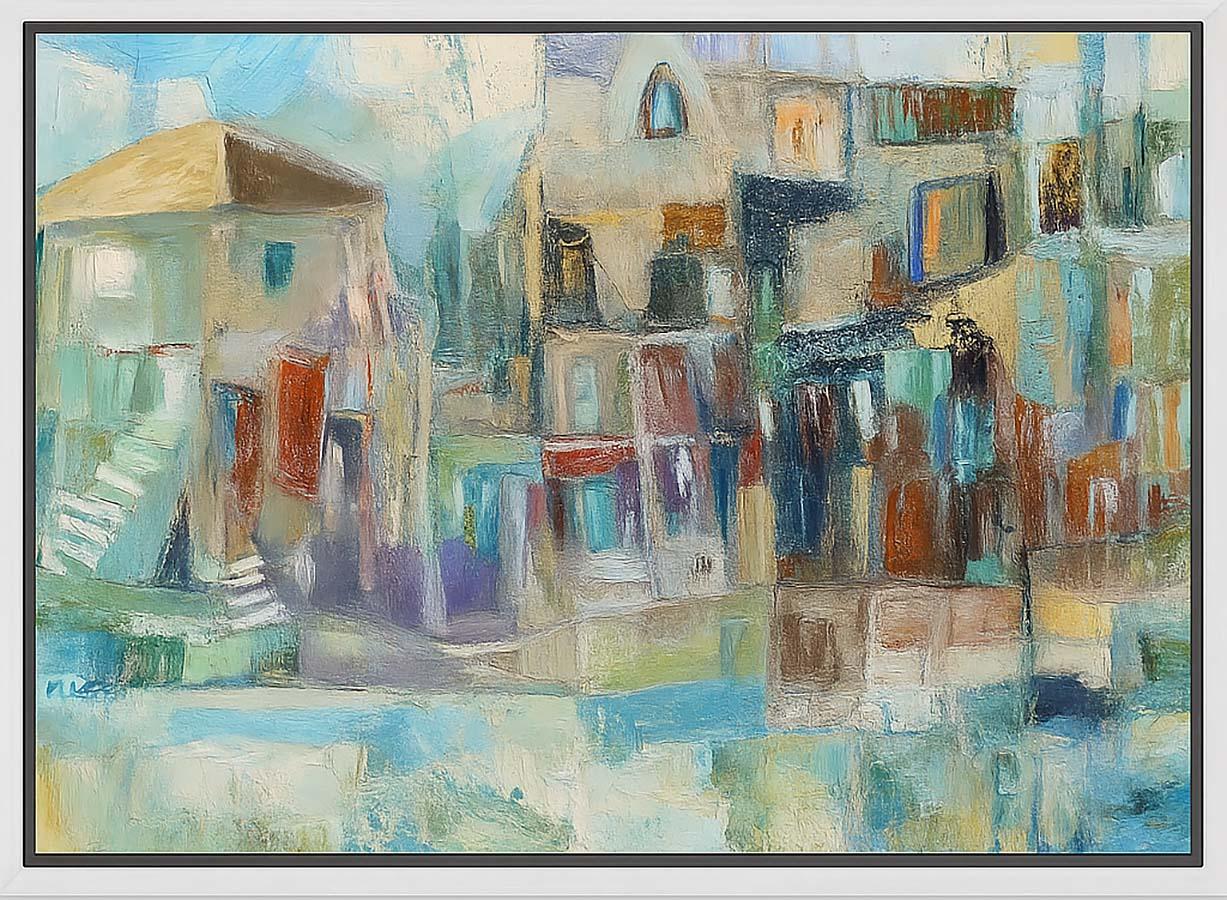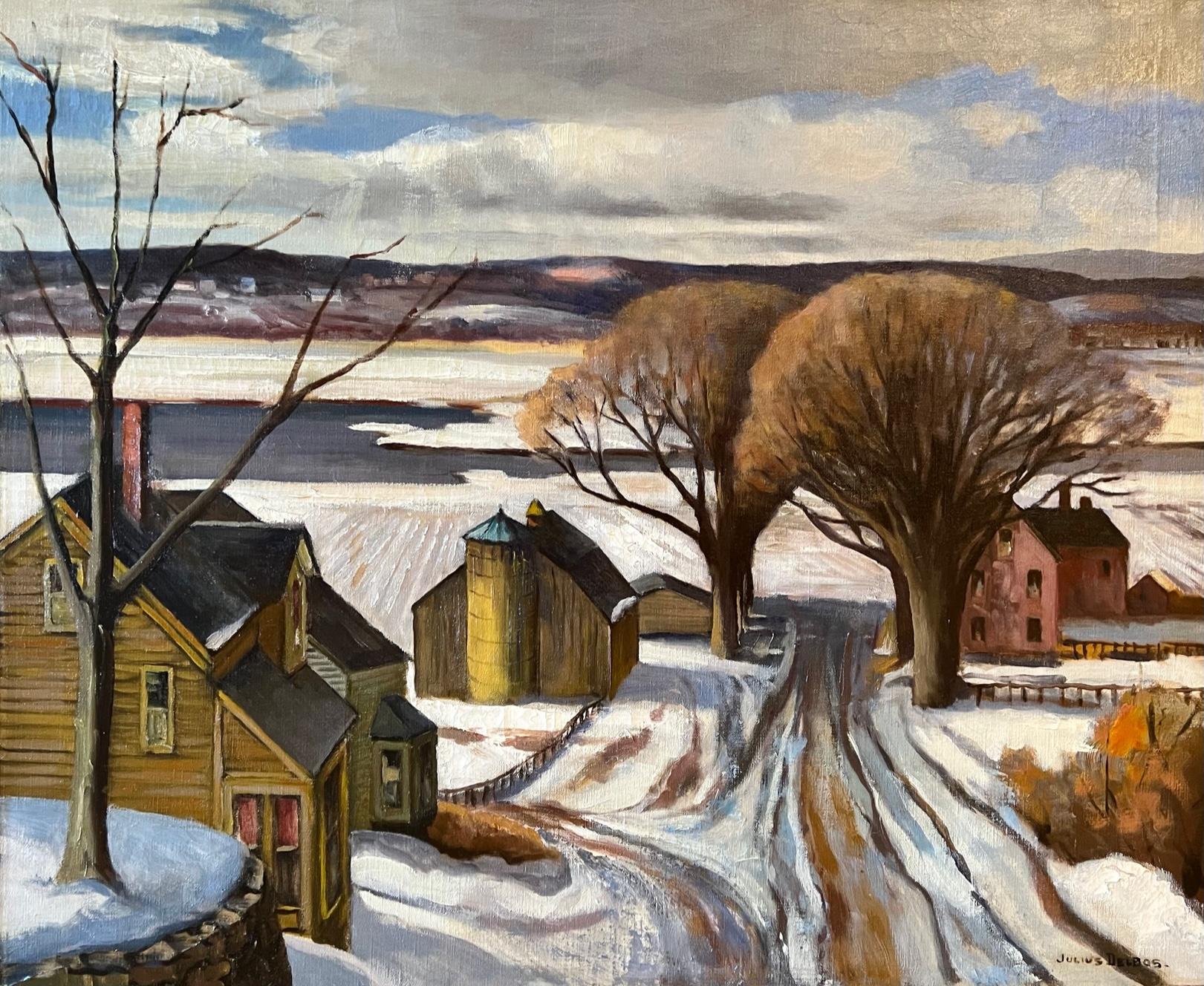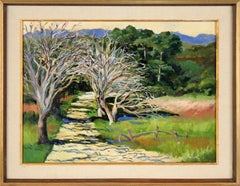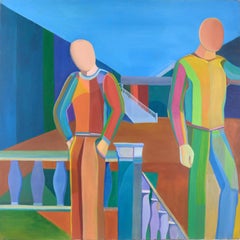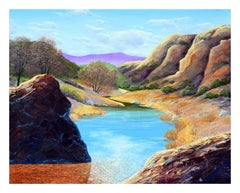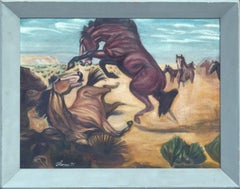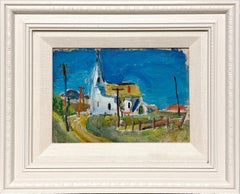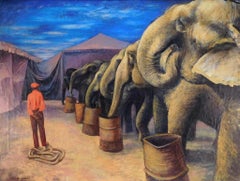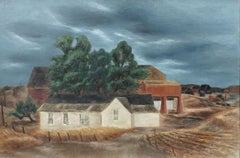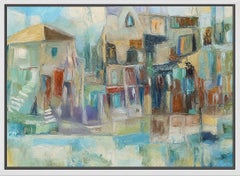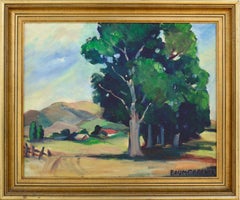
Farm in the Valley - Plein Air California Landscape
View Similar Items
Want more images or videos?
Request additional images or videos from the seller
1 of 9
BaumgardnerFarm in the Valley - Plein Air California Landscape
$3,000List Price
About the Item
- Creator:Baumgardner
- Dimensions:Height: 20 in (50.8 cm)Width: 24 in (60.96 cm)Depth: 2 in (5.08 cm)
- Medium:
- Movement & Style:
- Period:
- Condition:Very good. Some light craquelure. Good frame included as-is.
- Gallery Location:Soquel, CA
- Reference Number:Seller: JT-S47041stDibs: LU5423104003
About the Seller
5.0
Platinum Seller
Premium sellers with a 4.7+ rating and 24-hour response times
Established in 1986
1stDibs seller since 2014
2,966 sales on 1stDibs
Authenticity Guarantee
In the unlikely event there’s an issue with an item’s authenticity, contact us within 1 year for a full refund. DetailsMoney-Back Guarantee
If your item is not as described, is damaged in transit, or does not arrive, contact us within 7 days for a full refund. Details24-Hour Cancellation
You have a 24-hour grace period in which to reconsider your purchase, with no questions asked.Vetted Professional Sellers
Our world-class sellers must adhere to strict standards for service and quality, maintaining the integrity of our listings.Price-Match Guarantee
If you find that a seller listed the same item for a lower price elsewhere, we’ll match it.Trusted Global Delivery
Our best-in-class carrier network provides specialized shipping options worldwide, including custom delivery.More From This Seller
View AllShaded Path in the California Hills - Original Oil on Canvas (Laid on Board)
Located in Soquel, CA
Shaded Path in the California Hills - Oil on Canvas (Laid on Board)
Beautiful and colorful California landscape of trees lining a path by Palo Alto and Monterey artist Nancy Faisant...
Category
Late 20th Century American Modern Landscape Paintings
Materials
Canvas, Oil, Board
"One Thousand Words" - Surreal Figurative
Located in Soquel, CA
Bold figurative work by Richard Cronin (American, b. 1952). Two figures stand on a patio, turned away from each other. The figures and scene are rendere...
Category
1970s American Modern Figurative Paintings
Materials
Canvas, Oil
$2,040 Sale Price
20% Off
Mount Hamilton Realist Landscape
By Luke Stamos
Located in Soquel, CA
Vivid, modernist Mt. Hamilton landscape attributed to Luke Stamos (American, 20th century). Oil on canvas. Unsigned. Unframed. Image size: 18"H x 24"W. This art work is in the distinctive realistic style of Luke Stamos. We certify that the work is by the hand of Luke Stamos.
Artists statement: "I was born in Chicago, and began studying art at the Chicago Art Institute at age 5. When my family moved to San Francisco in 1944, I became aware of California’s splendid outdoor life, and began to pursue a life-long hobby of hunting and fishing. While attending high school in Daly City...
Category
1980s American Modern Landscape Paintings
Materials
Canvas, Oil
"King of the Range" - Mid Century Western Fighting Stallions
By Bernard Preston Thomas
Located in Soquel, CA
Wonderful and dynamic western painting of two wild fighting stallions by listed artist Bernard Preston Thomas (American, 1918-1992), dated 1951. Signed and dated lower left corner and on verso. Image size: 28"H x 36"W. Presented in rustic painted frame size: 34"H x 41"W x 3"D.
Originally from Sheridan, Wyoming, he loved football and art, giving up the sport to concentrate on a career in art. Thomas graduated from Woodbury College in Los Angeles with a Bachelor of Science degree, earning the Leo Youngsworth Award for outstanding senior art student at Woodbury.
He became a camouflage technician at the outbreak of WWII and caught the attention of General Patton...
Category
1950s American Modern Animal Paintings
Materials
Canvas, Oil
Mid Century Serene Lakeside Landscape
Located in Soquel, CA
Serene mid century lakeside landscape by an unknown artist (American, 20th Century). Presented in a rustic giltwood frame. Image: 9"H x 12"W. Framed: 11.25"H x 14.25"W.
Excellent w...
Category
1960s American Modern Landscape Paintings
Materials
Canvas, Oil, Illustration Board
Morning Sunrise, Mid Century Laguna Hills Figurative Landscape
Located in Soquel, CA
Beautiful mid century plein air figural landscape of Laguna Niguel, California by an unknown artist (American, 20th Century). The morning sun gli...
Category
1950s American Modern Landscape Paintings
Materials
Canvas, Oil, Cardboard
You May Also Like
A Cheerful, 1930s American Scene Landscape Painting with Church and Country Road
By Francis Chapin
Located in Chicago, IL
A Cheerful, 1930s American Scene Landscape Painting with Church and Country Road by Notable Chicago Modern Artist, Francis Chapin (Am. 1899-1965). A gem of a painting, exemplifying ...
Category
1930s American Modern Landscape Paintings
Materials
Canvas, Oil, Board
Circus Elephants American Modernism WPA Regionalism Mid-Century Modern Oil
Located in New York, NY
Circus Elephants American Modernism WPA Regionalism Mid-Century Modern Oil. Signed lower left.
Not much is known about Marco de Marco, but just look at...
Category
1930s American Modern Animal Paintings
Materials
Canvas, Oil
"Glasco Landscape" Albert Heckman, circa 1940 New York Modernist Landscape
By Albert Heckman
Located in New York, NY
Albert Heckman
Glasco Landscape, circa 1940
Signed lower right
Oil on canvas
25 1/4 x 39 1/2 inches
Albert Heckman was born in Meadville, Western Pennsylvania, 1893. He went to New York City to try his hand at the art world in 1915 after graduating from high school and landing a job at the Meadville Post Office. In 1917, at the age of 24, Heckman enrolled part-time in Teachers' College, Columbia University's Fine Arts Department to begin his formal art education. He worked as a freelance ceramic and textile designer and occasionally as a lecturer at the Metropolitan Museum of Art. In the early 1920s, at the age of almost 30, he graduated with a Bachelor of Arts degree from Columbia Teachers College. He was especially impacted by his instructor at Columbia, Arthur Wesley Dow.
After graduating, he was hired by the Teachers' College as a Fine Arts instructor. He stayed with Columbia Teachers' College until 1929, when he left to attend the Leipzig Institute of Graphic Arts in Leipzig, Germany. Isami Doi (1903-1965), who was born in Hawaii, was arguably his most impressive student at Columbia. Doi is now regarded as one of the most prominent artists hailing from Hawaii. Heckman became an active member and officer of the Keramic Society and Design Guild of New York in the 1920s as part of his early commercial art career. The Society's mission was to share knowledge and showcase textile and ceramic design exhibits.
In 1922, Heckman married Florence Hardman, a concert violinist. Mrs. Heckman's concert schedule during the 1920s kept Albert and Florence Heckman apart for a significant portion of the time, but they spent what little time they had together designing and building their Woodstock, New York, summer house and grounds. A small house and an acre of surrounding land on Overlook Mountain, just behind the village of Woodstock, were purchased by Albert and Florence Heckman at the time of their marriage. Their Woodstock home, with its connections, friendships, and memories, became a central part of their lives over the years, even though they had an apartment in New York City.
Heckman's main artistic focus shifted to the house on Overlook Mountain and the nearby towns and villages, Kingston, Eddyville, and Glasco. After returning from the Leipzig Institute of Graphic Arts in 1930, Mr. Heckman joined Hunter College as an assistant professor of art. He worked there for almost thirty years, retiring in 1956. Throughout his tenure at Hunter, Mr. Heckman and his spouse spent the summers at their Woodstock residence and the winters in New York City. They were regular and well-known guests at the opera and art galleries in New York. Following his retirement in 1956, the Heckmans settled in Woodstock permanently, with occasional trips to Florida or Europe during the fall and winter. Mr. Heckman's close friends and artistic career were always connected to Woodstock or New York City. He joined the Woodstock art group early on and was greatly influenced by artists like Paul and Caroline Rohland, Emil Ganso, Yasuo Kuniyoshi, Andre Ruellan, and her husband, Jack...
Category
1940s American Modern Figurative Paintings
Materials
Canvas, Oil
Original Oil Painting American Modern Mediterranean Village Colorful Cityscape
Located in Buffalo, NY
Dorothy Rivo
Untitled (Mediterranean Village), c. 1960s–70s
Oil on canvas
Framed dimensions: 24 in. H × 36 in. W
Presented in a contemporary white floater frame
In Untitled (Mediter...
Category
Mid-20th Century American Modern Landscape Paintings
Materials
Canvas, Oil
Untitled (Farm in Winter)
By Julius M. Delbos
Located in Los Angeles, CA
This work is part of our exhibition America Coast to Coast: Artists of the 1940s
Untitled (Farm in Winter), 1940s, oil on canvas, signed lower right, 26 x 30 inches, presented in an original frame
Julius Delbos...
Category
1940s American Modern Paintings
Materials
Canvas, Oil
Six O'Clock
Located in Los Angeles, CA
Six O-Clock, c. 1942, oil on canvas, 30 x 20 inches, signed and titled several times verso of frame and stretcher (perhaps by another hand), marked “Rehn” several times on frame (for the Frank K. M. Rehn Galleries in New York City, who represented Craig at the time); Exhibited: 1) 18th Biennial Exhibition of Contemporary American Oil Paintings from March 21 to May 2, 1943 at The Corcoran Gallery of Art in Washington, D.C. #87, original price $450 (per catalog) (exhibition label verso), 2) Craig’s one-man show at the Frank K. M. Rehn Galleries, New York City, from October 26 to November 14, 1942, #10 (original price listed as $350); and 3) Exhibition of thirty paintings sponsored by the Harrisburg Art Association at the State Museum of Pennsylvania in Harrisburg in March, 1944 (concerning this exhibit, Penelope Redd of The Evening News (Harrisburg, Pennsylvania) wrote: “Other paintings that have overtones of superrealism inherent in the subjects include Tom Craig’s California nocturne, ‘Six O’Clock,’ two figures moving through the twilight . . . .” March 6, 1944, p. 13); another label verso from The Museum of Art of Toledo (Ohio): original frame: Provenance includes George Stern Gallery, Los Angeles, CA
About the Painting
Long before Chris Burden’s iconic installation outside of the Los Angeles County Museum of Art, Urban Light, another artist, Tom Craig, made Southern California streetlights the subject of one of his early 1940s paintings. Consisting of dozens of recycled streetlights from the 1920s and 1930s forming a classical colonnade at the museum’s entrance, Burden’s Urban Light has become a symbol of Los Angeles. For Burden, the streetlights represent what constitutes an advanced society, something “safe after dark and beautiful to behold.” It seems that Craig is playing on the same theme in Six O-Clock. Although we see two hunched figures trudging along the sidewalk at the end of a long day, the real stars of this painting are the streetlights which brighten the twilight and silhouette another iconic symbol of Los Angeles, the palm trees in the distance. Mountains in the background and the distant view of a suburban neighborhood join the streetlights and palm trees as classic subject matter for a California Scene painting, but Craig gives us a twist by depicting the scene not as a sun-drenched natural expanse. Rather, Craig uses thin layers of oil paint, mimicking the watercolor technique for which he is most famous, to show us the twinkling beauty of manmade light and the safety it affords. Although Southern California is a land of natural wonders, the interventions of humanity are already everywhere in Los Angeles and as one critic noted, the resulting painting has an air of “superrealism.”
About the Artist
Thomas Theodore Craig was a well-known fixture in the Southern California art scene. He was born in Upland California. Craig graduated with a degree in botany from Pomona College and studied painting at Pamona and the Chouinard Art School with Stanton MacDonald-Wright and Barse Miller among others. He became close friends with fellow artist Milford Zornes...
Category
1940s American Modern Landscape Paintings
Materials
Canvas, Oil
$12,500
Recently Viewed
View AllMore Ways To Browse
Surf Board Art
Draft Horse Painting
Dutch Battle Painting
Harold Jones
Hawthorne Vintage
J Harvey Painting
Maple Tree Painting
Mary Ball Art
Ocean Sunrise Paintings
Oil Painting Murphy
Pissarro Paul Emile
Sevilla Painting
Shipwreck Painting
William E Harris
David Hopper
Gruppe Oil Painting
John Moody
Lady Of The Lake
